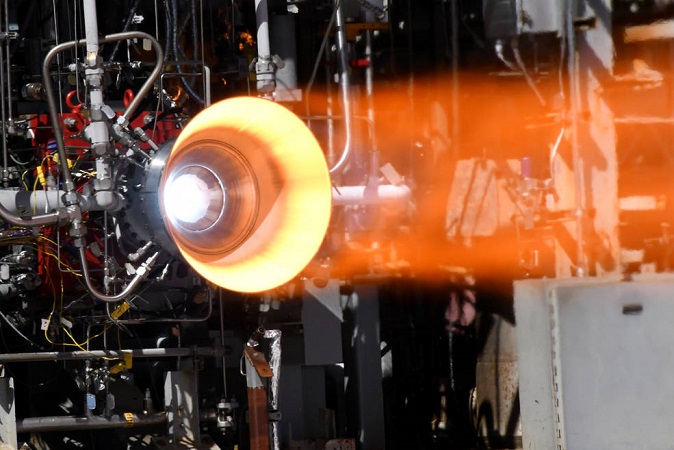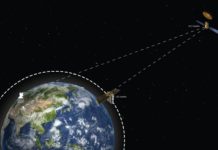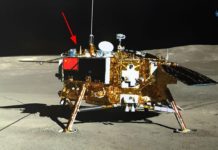Additive Manufacturing (AM) or 3D printing, as it is commonly known, is a technology that is being more and more used in manufacturing across many industries. The space industry is no exception, and slowly companies are embracing this technology in innovative ways to gain a competitive advantage. The space industry needs a small number of highly customized parts to be manufactured and AM lends itself to do exactly that.
Additive Manufacturing is a process of building components by depositing material – usually layer by layer – using the digital 3D design data. Conversely, traditional manufacturing methods like subtractive manufacturing cut material away from a solid block of material mostly done using Computer Numeric Control (CNC) machines. There is also a new development in the form a hybrid printer that combines subtractive techniques like milling with additive deposition.
3D printing brings in the advantages of less labour, more automation and hence, reduced time to manufacture of components. In some cases, the reduction can be more than 50% from current manufacturing lead times. AM reduces the weight of components, thereby improving payload capacity for launch vehicles. AM improves the reliability of the whole system due to considerable reduction in the part-count. With fewer parts to put together, there are fewer incidents to resolve. Since the printing relies more on automation, the problems associated with labour are considerably reduced. It also eases supplier management as there are less supplier components. All these result in benefits of reduced manufacturing costs and lead-times.
This technology, for the launch vehicle industry, is still in its early stages. Slowly, manufacturers of launch vehicles are adopting it for some of the components of the engines that propel these vehicles. Some of the components for the launch vehicles that have been made using AM are the combustion chamber, chamber lining jackets, nozzle coolant channels, turbo-pumps, injectors and valves. While incumbent and large launch vehicle manufacturers are using it only to manufacture some of their existing parts and components without too many changes in design, new companies and small launcher manufacturers are more daring and are using the new technology in more innovative ways.
A number of companies have used AM to make tools and rapid prototypes, which will not be discussed. Here we look at some of the areas in which AM has been put to use by some of the companies in directly manufacturing launch vehicles and their components, although this list is by no means exhaustive.
3D printed fuel
At the basic level of implementation of AM technologies, some companies like Florida-based Rocket Crafters and Gilmour Space Technologies of Australia/Singapore are 3D-printing solid fuel for their hybrid engines – engines with solid fuel and liquid oxidiser. Here the solid fuel is cast to form an inner combustion chamber with a geometric pattern. For the best performance in hybrid engines, the geometric pattern needs to be complex and precise. Any inconsistencies in the motor makeup can cause vibrations during the flight. These companies have used AM technology to realise the advantage of flawless, high performance fuel grains.
3D printed vehicle components: Small Launchers
Rocket Lab has been talked about for being innovative and using the latest technology in their small satellite launch vehicle, Electron. The Rutherford engine (used in Electron) developed by them has a 3D printed combustion chamber, injectors, pumps and valves. This engine is used in both stages of the two-stage Electron rocket. In making those engine components, they use an advanced form of 3D printing called Electron Beam Melting (EBM). Here the raw material (metal powder or wire) is fused completely layer by layer in vacuum using the heat from an electron beam.
One of the NewSpace companies, Relativity Space, is taking the extreme step of planning to 3D print their entire launch vehicle called Terran 1. In order to enable this, they have developed their own proprietary 3D printers called Stargate. According to them the complete printing of Terran 1 reduces its part-count from 100,000 to 1000 components. The vehicle’s Aeon 1 engine has less than 100 components.
NewSpace companies like Additive Rocket Corporation (ARC) are even more daring and are using Additive Manufacturing in a very unique way. Instead of 3D printing old existing engine designs, they use an innovative method called generative design. Here, computer algorithms generate a number of designs that work within a set of constraints and iterate within these designs to create an optimal solution. With this approach, they are developing 3D printed liquid propellant thrusters and engines for launch vehicles, using a high-performance nickel superalloy known as Inconel and a process known as Direct Metal Laser Sintering (DMLS). They say that their designs have brought in weight savings of over 50%. Their innovative design of the channels also have helped in reducing the pressure required from the turbo-pumps and fuel tanks considerably. While these engines externally look no different from traditional engines, their internal geometry of the channels look more like tree roots.
3D printed vehicle components: Large organizations
NASA’s Marshall Space flight center is using AM in a number of their projects with industry partners. In 2013 they tested a 3D printed injector for a launch vehicle engine using Selective Laser Melting (SLM), where they managed to reduce the number of parts from 115 to 2. In another project, they created a 3D printed copper combustion chamber liner using a nickel-alloy. Also, they have applied AM in the fabrication of nozzles for engines by using a process called Laser Wire Direct Closeout (LWDC), which uses wire freeform laser deposition to precisely closeout nozzle coolant channels. These channels carry high pressure coolant fluid that protects the nozzle walls from the high temperatures of the exhaust gases from the combustion chamber. Marshall teams have also been working on additively manufactured turbo-pumps that have shown parts consolidation by 45% compared with parts made by traditional manufacturing.
If you have enjoyed reading this article, do take a moment to subscribe to our email newsletter here. We will not sell your email address to a third party, and you can unsubscribe at any time.
The RL10C-X engine from Aerojet Rocketdyne is an upper stage rocket engine that will power many of the launch vehicles in the US, including United Launch Alliance’s next-generation Vulcan Centaur rocket. This engine is a prime example of AM being used in large vehicles. In March 2016 they did hotfire tests on an engine with a printed core injector. In June this year the company announced that a 3D printed copper thrust chamber of this engine successfully completed a series of hotfire tests.
SpaceX’s tryst with AM started in late 2013 when they printed the SuperDraco engine chamber, using the Inconel/DMLS process mentioned above, that is regeneratively cooled. The SuperDraco engine is used as part of its Dragon Version 2 vehicle’s launch escape system and their crewed space flight program. In 2014, SpaceX printed the Main Oxidiser Valve (MOV) body in one of the Merlin 1D engines on the Falcon 9. The same part traditionally cast took months to make whereas it was done in 2 days when printed. The new Raptor engine developed by SpaceX will not be left behind and the turbo-pumps of the Raptor engine will be made using AM technology.
The innovatively built BE-4 engine from Blue Origin that powers its New Glenn orbital rocket’s core stages leverages AM in many components of the engine. This engine has multiple pumps for the oxidiser – an initial pump to increase pressure and a final boost pump before injection. Its Oxidizer Boost Pump (OBP) uses a single aluminum part for the housing and all stages of the turbine are printed from Monel, a nickel alloy. The approach allows for complex internal flows in the housing. The turbine nozzle and rotors are also 3D printed. The company claims that parts that took a year to produce traditionally were produced in 3 months using AM.
With these huge advantages, AM technology will be used more and more in the future in launch vehicle manufacture. Incumbent companies with large launch vehicles will selectively use it and make a higher percentage of the vehicle components using this technology. NewSpace companies with small and medium satellite launchers will be more daringly innovative and use it extensively, to the point of almost making the whole vehicle. This will drive costs and lead-times down to new lows and make vehicles more reliable. Companies who do not use it will be left out since they will be missing out on these advantages and will certainly find it difficult to compete with those who use this technology.







